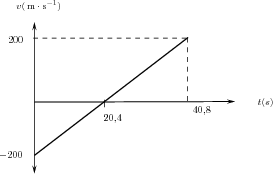

This coefficient is negative, since gravity pulls downward, and the value will either be " −4.9" (if your units are "meters") or " −16" (if your units are "feet"). Let's call it Projectile1, and write in A1 'Motion of a Projectile Under Gravity' There are three variables: the initial horizontal velocity, call it vxinit, the initial vertical velocity vyinit, and the acceleration due to gravity g. In other words, we will use one set of equations to describe the horizontal motion of the lime, and another set of equations to describe the vertical motion of the lime. (If you have an exercise with sideways motion, the equation will have a different form, but they'll always give you that equation.) The initial velocity is the coefficient for the middle term, and the initial height is the constant term.Īnd the coefficient on the leading term comes from the force of gravity. It's easy to reproduce this compound motion with a spreadsheet. One of the easiest ways to deal with 2D projectile motion is to just analyze the motion in each direction separately. This is always true for these up/down projectile motion problems. The initial velocity (or launch speed) was 19.6 m/s, and the coefficient on the linear term was " 19.6". The initial launch height was 58.8 meters, and the constant term was " 58.8". (Yes, we went over this at the beginning, but you're really gonna need this info, so we're revisiting.) Note the construction of the height equation in the problem above. The equation for the object's height s at time t seconds after launch is s( t) = −4.9 t 2 + 19.6 t + 58.8, where s is in meters. An object is launched at 19.6 meters per second (m/s) from a 58.8-meter tall platform.Yes, you'll need to keep track of all of this stuff when working with projectile motion. This means that there is an unbalanced force acting on the ball and so the ball will.

The projectile-motion equation is s( t) = −½ g x 2 + v 0 x + h 0, where g is the constant of gravity, v 0 is the initial velocity (that is, the velocity at time t = 0), and h 0 is the initial height of the object (that is, the height at of the object at t = 0, the time of release). Projectiles - vertical motion The vertical motion of a projectile is controlled by the force of gravity. Projectile motion will lead to 2 different velocity vectors For our problem, one equation won’t be enough, because its projectile motion, it is moving both. If a projectile-motion exercise is stated in terms of feet, miles, or some other Imperial unit, then use −32 for gravity if the units are meters, centimeters, or some other metric unit, then use −9.8 for gravity. And this duplicate "per second" is how we get "second squared". So, if the velocity of an object is measured in feet per second, then that object's acceleration says how much that velocity changes per unit time that is, acceleration measures how much the feet per second changes per second. What does "per second squared" mean?Īcceleration (being the change in speed, rather than the speed itself) is measured in terms of how much the velocity changes per unit time. The "minus" signs reflect the fact that Earth's gravity pulls us, and the object in question, downward. So this indicates that at point, the object has an initial horizontal velocity and an initial vertical velocity, which are. The g stands for the constant of gravity (on Earth), which is −9.8 meters per second square (that is meters per second per second) in metric terms, or −32 feet per second squared in Imperial terms. In this question, we want to determine the graph that correctly shows the changes in the kinetic energy of the object during projectile motion. In projectile-motion exercises, the coefficient on the squared term is −½ g.


 0 kommentar(er)
0 kommentar(er)
